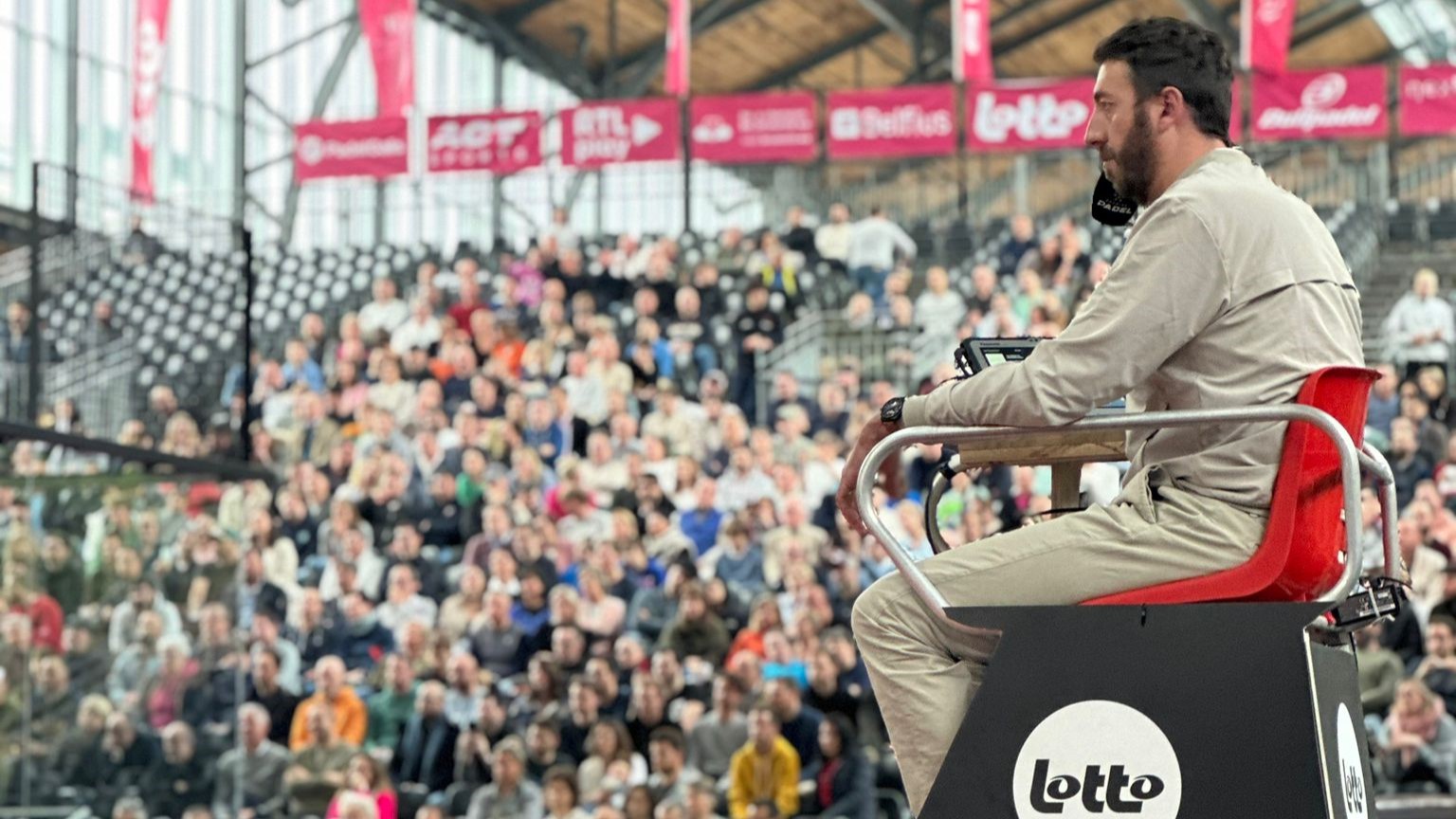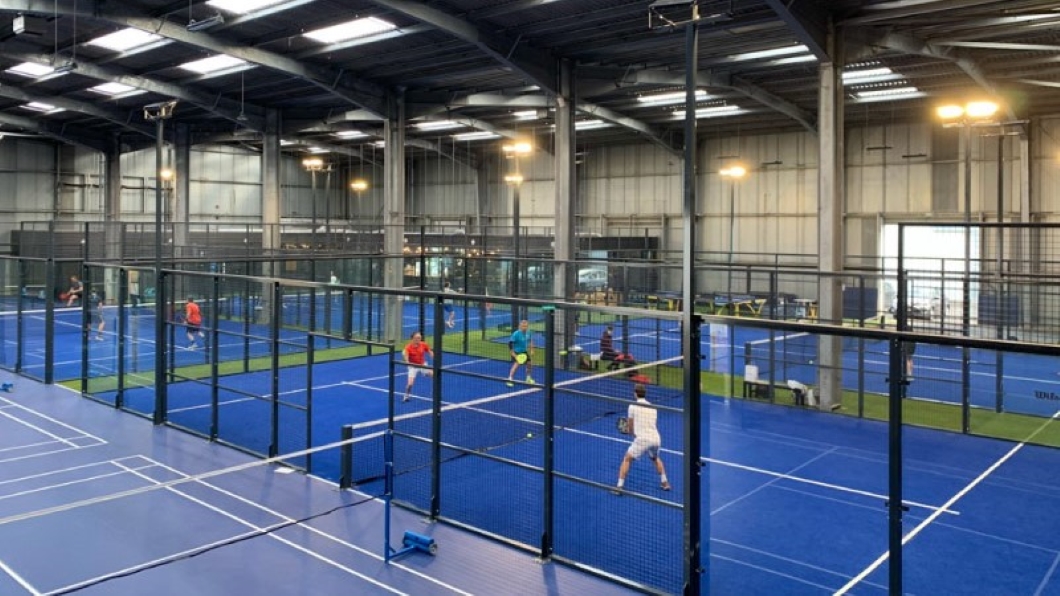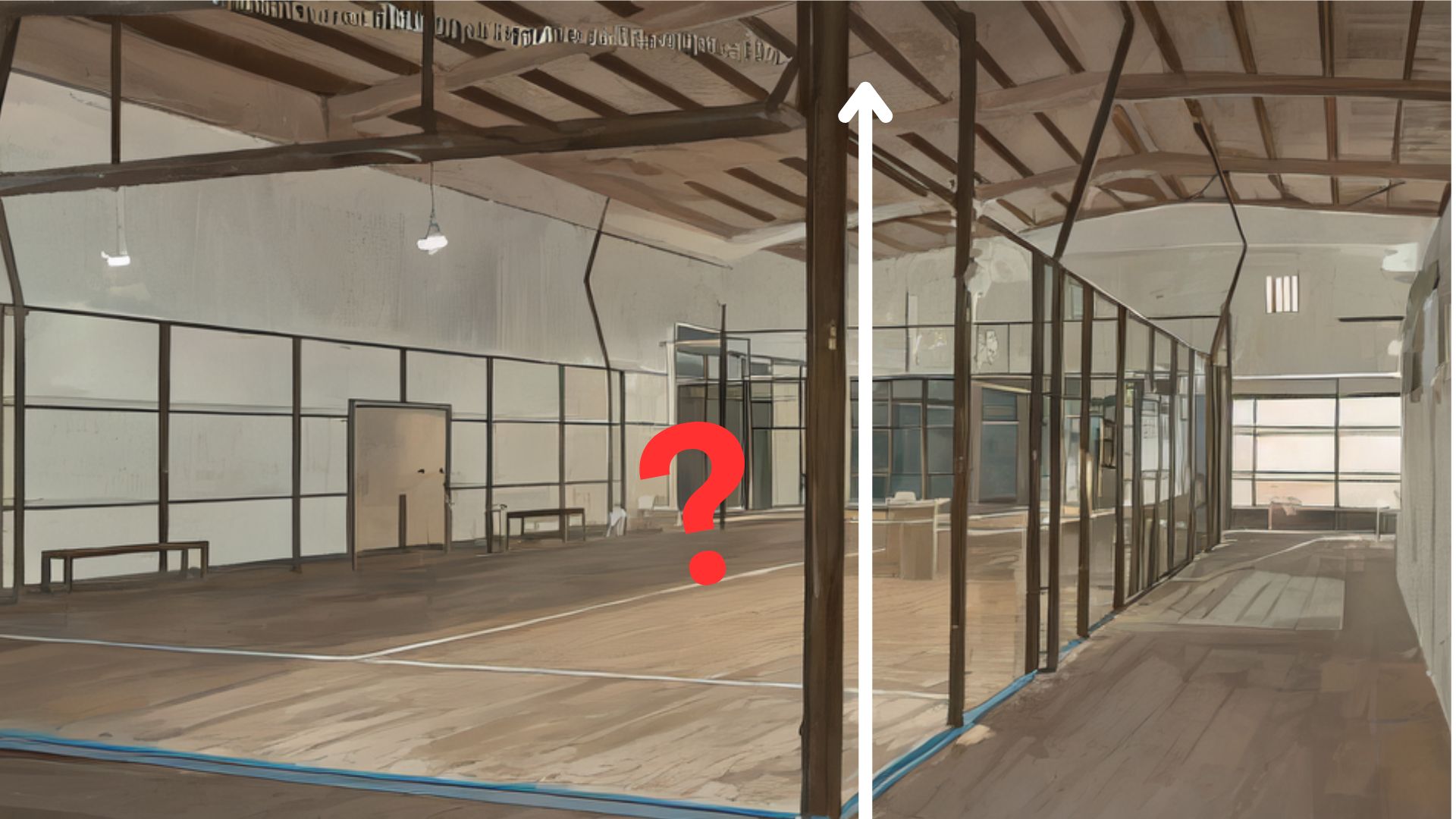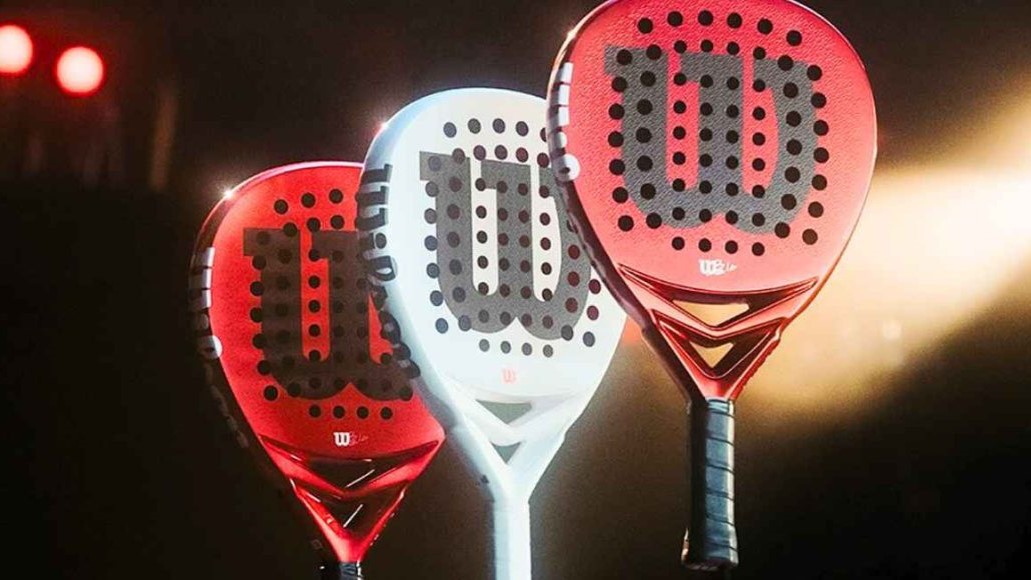The field of Padel consists of a specific environment different from other racket sports.
Small in size, it measures 20m long and 10m wide with a net in the middle (Photo 1). In comparison, a tennis court measures 23,77m by 10,97m but the latter has an outdoor playing area enlarging the total area of the playing surface (34,77m by 17,07) (14).
The court net is identical to the tennis net, made up of mesh stretched between the two side posts by a steel cable wrapped in a white plastic band (Photo 2).
Pierre-Olivier Ferrand, General practitioner trained in sports pathologies and manual medicine, dissects us THE TRAUMATIC PATHOLOGIES OF THE PLAYER PADEL as part of his thesis which you can find in full HERE.
Characteristics of a track padel
One of the peculiarities of padel is in its playing area limited and partitioned by grids in its lateral part and windows in its postero-lateral and posterior parts. The player of padel can leave the field only through a small door of 2,2m high by 1,8m wide, distributed on either side of the net of padel (15)

The surface of the field is made up of a synthetic turf carpet on which is applied a more or less important layer of sand.
Thus, this specific medium offers the four players present on the field a reduced playing surface creating increased proximity between the players, partner or opponent, as well as high game speed and multidirectional ball rebounds.
A particular racquet…
On the game side, the padel is practiced with solid rackets made of rigid foam covered with carbon or fiberglass. They weigh between 300 and 390 grams and all have a safety strap to connect them to the player's wrist (Photo 3). The balls used are similar to those used in tennis, with slightly lower pressure(15).

Unlike tennis, which is essentially played with the court facing you, padel plays out within all these structures. The player of padel is therefore permanently surrounded by a potentially traumatic framework. During the point, the player can hit the ball in front of his opponent, but he has a second option which consists in letting the ball bounce against the windows at the back of the court. He will then have to move around the field in order to be able to play this ball and will sometimes find himself with his back to the net and to his opponents, with a totally different position and landmarks as shown in the image below (Photo 4).
During opponent smashes, the player will be brought closer to the net. This proximity will be all the more important during very fast balls. The player thus approaches the opponent even as he is in the process of making his move, thus making the environment particularly dangerous since he must also avoid the ball. Some types of smashes have the particularity of bringing the ball out of bounds above the side window or grid. The trained player can then try to catch this ball by running out of the field through the door located on either side of the net (Photo 2).

Sources
14. Build a tennis court – construction renovation courts tennis clubs | French Tennis Federation [Internet]. [cited 24 Jul 2022]. Available at: https://www.fft.fr/gerer-mon-club/equipement/construire-un-terrain/construire-un-court-de-tennis
15. Allain G. COURT OF PADEL : MEASUREMENTS AND DIMENSIONS [Internet]. Padel Nuestro Blog. 2019 [cited 11 Nov 2021]. Available at: https://www.padelnuestro.com/blog/en/court-of-padel-measurements-and-dimensions/
Passionate about tennis from an early age, Pierre-Olivier discovered a passion for padel in 2018. General practitioner trained in sports pathologies and manual medicine, he juggles between snowshoes and stethoscope for his greatest pleasure.





































































































 Brussels Premier Padel P2 – Galan makes history with a bronze racket
Brussels Premier Padel P2 – Galan makes history with a bronze racket Brussels Premier Padel P2 – the referee did his job in the final
Brussels Premier Padel P2 – the referee did his job in the final Brussels Premier Padel P2 – the final in stats
Brussels Premier Padel P2 – the final in stats Where to see Premier Padel en 2024 ?
Where to see Premier Padel en 2024 ? Guillaume Codron de Sud Padel : “A family project”
Guillaume Codron de Sud Padel : “A family project” Nallé Grinda: “Democratize the padel in the USA with PadelX "
Nallé Grinda: “Democratize the padel in the USA with PadelX " Simon Boissé: “We know that there are two nations in front of us”
Simon Boissé: “We know that there are two nations in front of us” Marie Maligo: “This period of frequent changes of partners was beneficial for me”
Marie Maligo: “This period of frequent changes of partners was beneficial for me” P1000 PadelShot Saint-Étienne – Watch the Hugounenq/Vincent – Seux/Courrin semi-final live
P1000 PadelShot Saint-Étienne – Watch the Hugounenq/Vincent – Seux/Courrin semi-final live P1000 PadelShot Saint-Étienne – Follow the surprise poster Vincent/Hugounenq – Couturier/Benmergui live
P1000 PadelShot Saint-Étienne – Follow the surprise poster Vincent/Hugounenq – Couturier/Benmergui live The All Star Tour returns on May 16 at the All In in Lyon
The All Star Tour returns on May 16 at the All In in Lyon D-7 of the “BetClic Remontada Padel”, at the foot of the Eiffel Tower
D-7 of the “BetClic Remontada Padel”, at the foot of the Eiffel Tower Mauritius: an island of padel
Mauritius: an island of padel José Manuel Escin at the inauguration of Casa Padel DOS: “Finally, and thank you!”
José Manuel Escin at the inauguration of Casa Padel DOS: “Finally, and thank you!” Padel Score comes to Tahiti for American Express Padel Cup!
Padel Score comes to Tahiti for American Express Padel Cup! Do you know the Rafa Nadal Academy Tour?
Do you know the Rafa Nadal Academy Tour? Play at padel on his yacht? Possible for €233.000!
Play at padel on his yacht? Possible for €233.000! Brussels Premier Padel P2 – the final in stats
Brussels Premier Padel P2 – the final in stats Find out everything about the dimensions of a plot of land padel
Find out everything about the dimensions of a plot of land padel Presentation of the Wilson Bela V2.5 collection
Presentation of the Wilson Bela V2.5 collection The LinkedIn of racquet sports: Racket Trip
The LinkedIn of racquet sports: Racket Trip At the heart of padel – Episode 25: Paul and Andoni answer your questions
At the heart of padel – Episode 25: Paul and Andoni answer your questions At the heart of padel – Episode 23: defend the window well
At the heart of padel – Episode 23: defend the window well Prohibition on playing topless Padel : the reasons
Prohibition on playing topless Padel : the reasons FIP Tour – Going far from Europe, THE strategy to earn points!
FIP Tour – Going far from Europe, THE strategy to earn points! What is a good football player? padel ?
What is a good football player? padel ? “Lefties give me headaches when I play against them!”
“Lefties give me headaches when I play against them!” At the heart of padel – Episode 14: how to earn points in winter?
At the heart of padel – Episode 14: how to earn points in winter? The basic tactics of padel
The basic tactics of padel A par 4 is always a winner...even if you manage to defend it!
A par 4 is always a winner...even if you manage to defend it! Carbon fiber VS fiberglass: what to choose?
Carbon fiber VS fiberglass: what to choose? How to effectively test a racket padel ?
How to effectively test a racket padel ? La padel to fight Parkinson's disease
La padel to fight Parkinson's disease Don't play with a cracked or broken racket, your body will thank you!
Don't play with a cracked or broken racket, your body will thank you! Michel Cymes: “The padel, physically, it’s serious!”
Michel Cymes: “The padel, physically, it’s serious!” Our Top 10 training courses padel in France and Europe
Our Top 10 training courses padel in France and Europe Jeremy Gala: “Promote the padel among young people in Belgium remains a challenge”
Jeremy Gala: “Promote the padel among young people in Belgium remains a challenge” The French Touch Academy organizes its selection day Padel-Study
The French Touch Academy organizes its selection day Padel-Study Report on the detection and training of younger generations
Report on the detection and training of younger generations